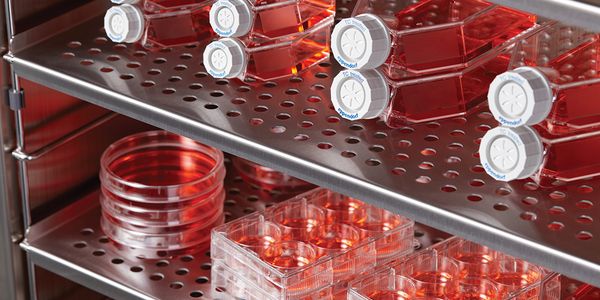Immunology metabolism
Immunology metabolism, or immunometabolism, broadly describes how energy is regulated and managed in the body and how energy is harnessed to defend the body against invasion. There is a lot of interplay between the immune response and metabolism because mounting an effective immune response requires a lot of energy. Those experiences immunometabolic imbalances may be prone to chronic metabolic disease such as obesity, diabetes, and cancer.
-
Contemporary law enforcement has greatly expanded its ability to solve crimes by the adoption of advanced forensic techniques, electronic monitoring and new approaches in crime scene procedur...
AUG 15, 2019 | 9:00 AM
DATE: August 15, 2019TIME: 9:00am PDT, 12:00pm EDT Radiation therapy is a critical tool for the treatment of brain tumors, however, exposure to high doses of ionizing radiation...
JUL 31, 2019 | 9:00 AM
DATE: July 31, 2019TIME: 9:00am PT, 12:00pm ET The choroid plexus, which makes up the blood-cerebrospinal fluid barrier in the central nervous system (CNS), lines the ventricle...
JUL 24, 2019 | 8:00 AM
DATE: July 24, 2019TIMEL 8:00am PT Mass cytometry (CyTOF®) is a powerful approach to characterize the immune composition of complex biological specimens and gain insights in...
JUN 05, 2019 | 5:00 PM
DATE: June 5, 2019TIME: 8:00am PDT, 11:00am EDT, 5:00pm CEST Eukaryotic cell cultures respond to the most subtle influence. Apart from the risk of contamination, minimal chan...
MAY 16, 2019 | 4:00 PM
DATE: May 16, 2019TIME: 7:00am PDT, 10:00am EDT, 4:00pm CEST The emergence of NGS is revolutionizing the microbiological sciences and transforming medicine. Deep sequencing has...
Whole food plant-based diets and medical cannabis have shared and continues to share similar levels of scrutiny, doubt, and stigma by the traditional medical community. One reason for the med...
Cellular research is optimal when using physiologically-relevant cell phenotypes and genotypes of human origin. This assertion has accelerated the adoption of primary cells, stem cells, and i...
FEB 26, 2019 | 11:00 AM
DATE: February 26, 2019TIME: 11:00am PST, 2:00pm EST Osteosarcoma is the most common type of primary bone cancer affecting adolescents and children attributed to...
Speaker:
Luke Tattersall, BSc Biomedical Sciences, PhD Candidate
Sponsored By: Thermo Fisher Scientific/Gibco
The main problem for insufficient cervical cancer screening globally (less than 20% women at risk) is outreach failure. Enabling POCs with modern IT/mobile technology and connecting them with...
Speaker:
Olivera Markovic, MD, PhD
NOV 01, 2018 | 12:00 AM
Alongside intense efforts to exploit T-cells as immunotherapies for cancer (e.g. checkpoint inhibitors, CAR-T, T-cell metabolism), researchers are increasingly considering other immune cell t...
Two projects looking at novel approaches to targeting inflammatory breast cancer will be presented. Inflammatory breast cancer (IBC) is a unique, understudied, and most lethal subtype account...
Speaker:
Kevin Williams, PhD
The oncogenic transcription factor c-MYC (MYC) is deregulated, and often overexpressed, in more than 50% of cancers. MYC deregulation is associated with poor prognosis and aggressive disease,...
Speaker:
Jason De Melo, PhD
In the past two decades a small number of infrequently dividing cells have been proposed as the source of multi-drug resistance during cancer treatment. These cells identified by their expres...
Speaker:
Krastan Blagoev, PhD
PacBio Sequencing simultaneously provides long sequence reads, high consensus accuracy, minimal sequence bias, and methylation detection. I will highlight new advances and updates on applying...
Speaker:
Jonas Korlach, PhD
























